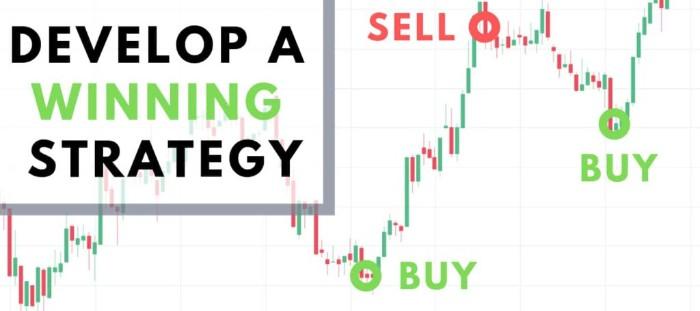How to Start Trading Early
Oct 11, 2024 By Marie White
Are you interested in trading but need help knowing where to start? If so, you're not alone. Trading can be intimidating, and beginners may feel overwhelmed, so it's important to learn the basics upfront.
This blog post will cover everything you need to know about starting trading early. We'll walk through the essential steps of understanding markets, researching strategies and setting goals, and exploring investment opportunities such as stocks and mutual funds.
We'll also discuss basic principles like risk management that should guide your trading decisions into the future. By reading this post, you will have all the knowledge necessary for a successful launch into the trading world!
Understand the Basics of Trading - study the different types of investments and learn how to calculate risk and rewards.

Before you start trading, it’s important to understand the basics. Get familiar with the different types of investments and understand how to calculate the risks and rewards associated with each one.
Researching online can be a great place to start; plenty of resources are available to guide beginners through understanding markets, researching strategies, and setting goals.
For example, stocks and mutual funds provide different levels of volatility that can result in varying returns on investment. Identifying trends and interpreting news will help you decide when to buy or sell for maximum gain.
Similarly, understanding which types of investments carry more risk than others should also factor into your decision-making process. Calculating potential losses against expected returns is essential to manage risk and optimize your trading strategy.
Finally, setting realistic goals for yourself is paramount in trading. Start small and work your way up as you become more experienced with the markets. This will help you stay focused on what’s important: maximizing profits while minimizing losses.
Develop a Trading Strategy - decide which type of trading you want to focus on and create a plan for success.

Developing a trading strategy is essential for successful trading. Deciding which type of trading you want to focus on is important. There are two main types of investing: active and passive.
Active traders are often more actively involved in the markets by conducting research and monitoring stocks, while passive investors tend to buy and hold more conservative investments such as mutual funds or index funds.
Once you have decided on a type of trading, create a plan for success. This can include setting goals and objectives, researching different strategies and asset classes, considering risk management principles, studying market trends, and setting up an automated system if desired.
Additionally, it's important to track your progress so that you can make necessary adjustments as needed.
Open an Account - choose a broker that offers access to the markets you're interested in and competitive fees and minimums.
Opening an account with a reputable broker is the first step in your trading journey. First, you must select a broker that can access the markets you’re interested in trading and offers competitive fees and minimums.
Research each broker's customer service policies and reviews, as well as their educational resources and portfolio management tools.
When opening an account, you must provide personal information, such as your name, address, social security number, etc., to ensure the broker keeps all data securely. Depending on the type of account you open – individual or joint – additional details may be needed from other people involved in the account.
Regarding minimum deposits, some brokers may require a minimum balance to start trading, while others do not. If this applies to your chosen broker, you should know the amount to be deposited to get started.
Once you’ve opened an account and have set up the funds needed for trading, it’s time to move on to the next step – researching strategies and exploring different markets. With a broker opening process complete, you can focus on other important aspects of starting as a trader.
Research Your Investments - use online resources to research potential investments, such as company financials or analyst reports.
Doing research is one of the most important steps you'll take when starting to trade. To make informed decisions, it's essential to familiarize yourself with the markets and develop an understanding of different investment opportunities.
You can use online resources such as company financials or analyst reports to research potential investments. These materials will help you gain insight into various companies and industries, providing valuable information on their performance history and current outlook.
Additionally, analyzing how experts in the field are trading can provide further guidance as you explore different strategies that may work for your portfolio.
Monitor Your Trades - regularly check your portfolio to ensure it performs as expected and make necessary adjustments.
Once you have researched and set your trading goals, it is important to regularly monitor the portfolio and ensure it is performing as expected. This means checking your profits/losses regularly and making adjustments if necessary.
To do this, you can use trading software or an online broker platform to keep track of your trades in real time. You can also take advantage of features like automatic stop losses and position limits that allow you to manage risk better.
Additionally, staying up to date with market news and trends is essential for successful trading. That way, you can more accurately anticipate changes in stock prices and act accordingly by buying or selling your stocks at the right time.
Doing research before opening any trade will also help you make more informed decisions. That way, you can be sure that your investments align with your overall trading strategy and goals.
Finally, it is important to remember that every system is flawed, and markets can fluctuate regardless of how well-prepared you are. Therefore, it’s necessary to manage risk responsibly and stay flexible so you can adjust your trades accordingly.
Take Profit When You Can - lock in profits when available by setting stop-losses or take-profit orders.
When trading, setting realistic goals and knowing when to get out of the market is important. Setting stop-loss orders or take-profit orders helps you protect your profits without constantly monitoring the markets.
A stop-loss order is an order that closes a trade as soon as it reaches a certain price level, while a take-profit order will close out your position when it reaches a target profit level. This can help you lock in profits quickly and effectively, so you can move on to other trades and investment opportunities.
FAQs
How can I do early trading?
Early trading typically involves making investments in the stock market or commodities markets. Before you start, it’s important to understand how these markets operate and any associated risks. Learn about what kinds of investment products are available and compare different strategies.
What should I consider before investing?
Before investing your money, consider your current situation and financial goals. Create a budget and determine how much you can invest without jeopardizing yourself. Research the different products available to find which ones fit your objectives.
How do I protect myself from risk?
Risk management is an important part of trading. Make sure to understand all terms and conditions related to your investments. Consider diversifying your portfolio by investing in various asset classes, such as stocks, bonds, mutual funds, real estate, and commodities.
Conclusion
Starting the journey towards trading can seem daunting, but with the right resources, research, and strategy, you can start making informed and reliable investments. Understand the different types of resources available, create a plan to maximize returns and manage risk, keep an eye on your investments at all times, set profit targets when needed, open an account with your chosen broker, and use sources like company financials or analyst reports for more in-depth research.

Why Is It Easier to Find a Job While Employed?

How Home Construction Loans Work

Personal Loans vs. Car Loans: Which is Right for You?

What Is a Credit Rating?

Discover it Student Cash Back Credit Card: A Detailed Review

IHG® Rewards Club Premier Credit Card Review

Best Student Loans

What is a Wrap Account

How To Pay Taxes If You're Overseas

